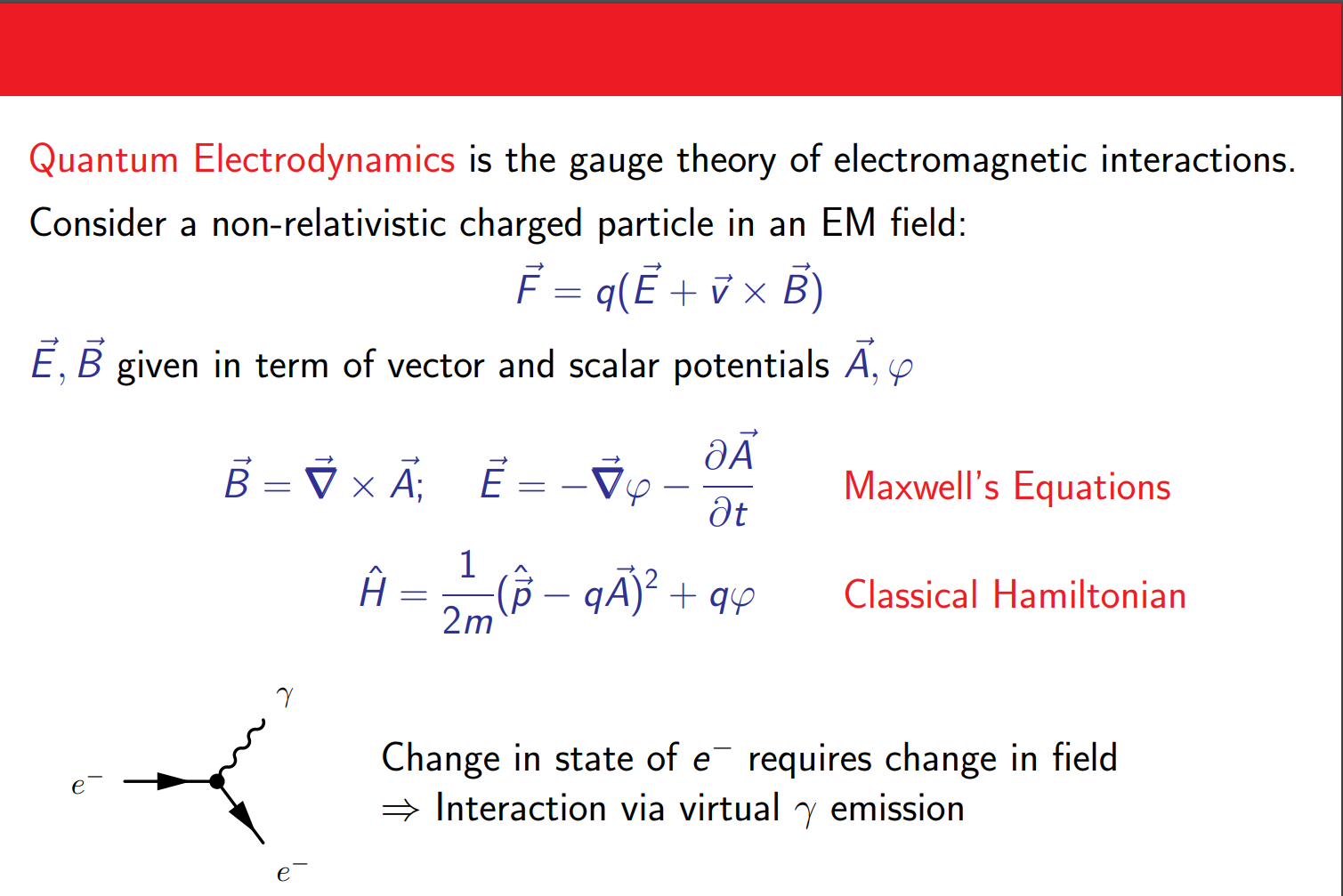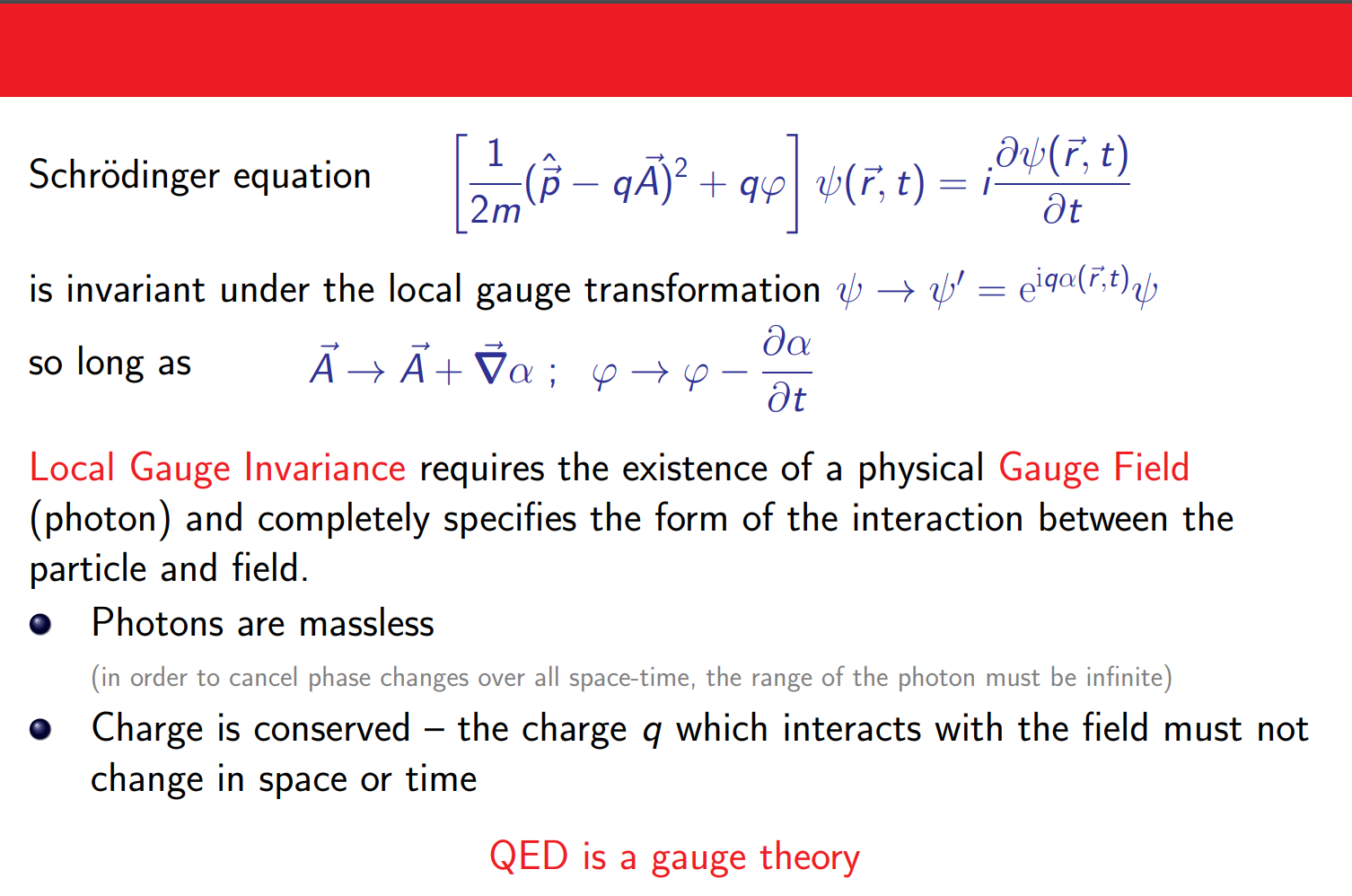QUANTUM ELECTRODYNAMICS - THE GUAGE THEORY
The theory of potential momentum is only one of three ways in which the idea of potential energy can be extended to the relativistic case. This theory is called gauge theory for obscure historical reasons. Gauge theory is important because electromagnetism as well as the theories of weak and strong sub-nuclear interactions are all of this type.

Gravity is the only fundamental force that does not take the form of a gauge theory. Instead, gravity takes the form of one of two other possible relativistic extensions of potential energy. This theory is called general relativity. The gravitational force in general relativity can be interpreted geometrically as a consequence of the curvature of spacetime. Mathematically, it is far too difficult to pursue here.
The third relativistic extension of potential energy considers potential energy to be a field which alters the rest energy of particles. High energy physicists believe that the elementary particles gain their mass by this mechanism. The field is called the Higgs field after the English physicist who first proposed this theory, Peter Higgs. The recent discovery of the Higgs boson at CERN’s Large Hadron Collider in Geneva, Switzerland supports this idea.


Finishing Touch:
➤ Quantum Electrodynamics is the gauge theory of electromagnetic interactions.➤ Local Gauge Invariance requires the existence of a physical Gauge Field (photon) and completely specifies the form of the interaction between the particle and field.
➤ Photons are massless
➤ Charge is conserved - the charge q which interacts with the field must not change in space or time
➤ QED is a gauge theory
